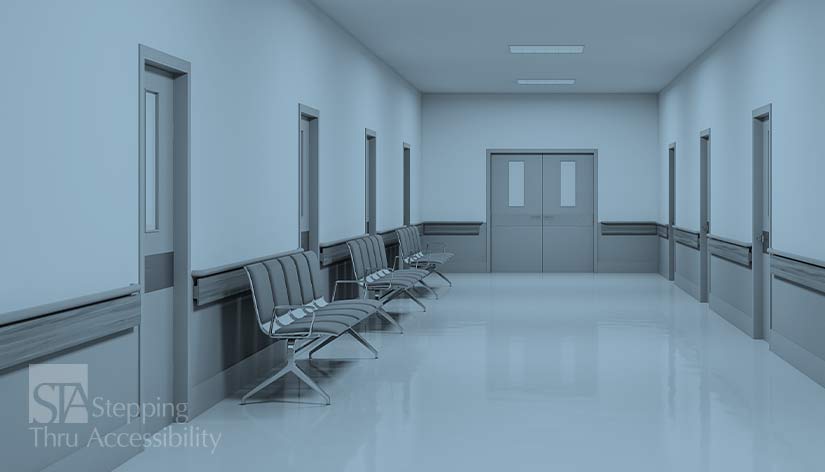Blog
Return to Blog »
Janis Kent, Architect, CASp © August, 2022 Recently I was asked a question regarding the exception under the ADA Standards 505.6 for gripping surfaces on handrails. There is indeed an exception for handrails along a sloped walkway of up to a 5% maximum slope. Basically it states, that if the hand rail is part of a crash rail or bumper guard, one does not need to provide the required obstruction clearances below the rail similar to ramps and stairs. The clearances will still need to be maintained on the back side and at each end of the rail of 1½” minimum. 505.6 Gripping Surface. Handrail gripping surfaces … EXCEPTIONS: 1. Where handrails are provided along walking surfaces with slopes not steeper than 1:20, the bottoms of handrail gripping surfaces shall be permitted to be obstructed along their entire length where they are integral to crash rails or bumper guards. But what is a crash rail or bumper guard, and are there any differences? The terms are somewhat nebulous, but generally bumper guards are typically used in areas with low impact and tend to be a shorter height of about 1½” to 4″ but protrude further from the wall. Crash rails, on the other hand, can be anywhere from 4″ to 8″ in height, and typically are used in higher impact areas. Sometimes both are used together to protect a wall with the bumper guard near the floor level and the crash rail higher up at hand rail height, which, with contrasting color can also be used for way finding. These rails and guards do provide for some cushioning and shock absorption with the use of materials such as vinyl, rubber, or polycarbonate, along with the method of attachment. Metal crash rails are typically used in high impact areas such as restaurants and hotels with the carts, and hospitals with the gurneys. But be aware, that for the handrail exception, the rail has to be integral to the crash rail or bumper guard. An item to note, is that wood rails are typically called chair rails and are part of wainscoting, rather than part of crash rails or bumper guards. Now this does not mean there is an exception for the gripping surface portion. That still needs to be maintained at a 1¼” to 2″ diameter for a circular profile , or if it is non-circular then it requires a maximum cross section of 2¼” with an outside perimeter of 4″ to 6¼”. Also, handrail extensions are only required on stairs and ramps. Nothing is stated as a requirement for extensions on sloped walkways. Another item, under regulations for protruding objects, the handrail is allowed to protrude 4½” maximum from the face of the wall, rather than the typical 4″ maximum. Remember that the protrusion can not reduce the required minimum clear width of the accessible route. And where this becomes important is in senior housing where a railing is required in corridors and sloped walkways under the California Unruh Act. Nothing in this article constitutes legal or design advice for a particular project or circumstance. Be aware that your local City or County may have additional requirements that are different or more restrictive than the State or Federal requirements. Also, this article is an interpretation and opinion of the writer which may vary for a particular project or due to other circumstances. It is meant as a general summary – current original regulations should always be reviewed when making any decisions and specific advice by a qualified professional should be secured for a particular project or circumstance. © Janis Kent, FAIA, Architect, CASp 2022 Thank you to Soyoung Ward, AIA, CASp for suggesting the topic.Handrails with Crash Rails and Bumper Guards
